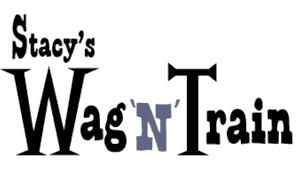Understand what dogs are “saying”
© Stacy Braslau-Schneck, CPDT
It’s important to understand what dogs are saying with their bodies, not only to know your own dog but to better predict what other dogs are doing. To really read dog body language takes experience. I encourage you to watch your own dog(s) and others. Go to the dog park and watch dogs interacting. Watch different body parts (ears, tails, eyes, lips, hair, overall posture) separately for a while. See if you can predict which body stances lead to which activities or outcomes.
Confidence/Fear
Signs of confidence: erect stance (standing tall), tail up, tail wagging in a slower sweep, ears pricked up or relaxed, direct look; relaxed, smaller pupils.
Signs of fear or concern: lowered stance, tail down or tucked under, tail wagging in a quick, frantic buzz; looking away or turning head away to look so that whites of eyes show (“whale eye”); dilated pupils. Dogs often bark out of fear, in an attempt to keep a distance between themselves and the Big Scary Thing, especially if they are cornered, fenced in, or on a leash.
Dogs that are aroused will often have their hair stand on end, usually the “hackles,” the areas over the shoulders and just before the tail. This doesn’t necessarily mean aggression, just that they are on high alert. Some dogs get “raised hackles” more easily than others; it’s like some people who get red in the face very easily.
 |
This little puppy is looking confidently at the camera. His tail is up (due to his breed it curls over his back); he looks directly at us with no whites showing in his eyes, and his ears, though a little hard to see, are pricked forward. |
|
This dog is relaxed and confident, with her tail curled over her back, her ears relaxed, and comfortably lying down. Her ball is between her feet in a clear sign of possession. |
 |
 |
This black lab pup is unsure about the plastic ducky (and maybe the water, too). Notice most of her body is still on shore while she stretches her neck out to sniff.
She’s not fearful, just uncertain. |
| Here she’s a lot more confident looking! Her tail is straight up (starting to curl back), and her body is compacted and one foot is lifted – she’s ready for the next move! | 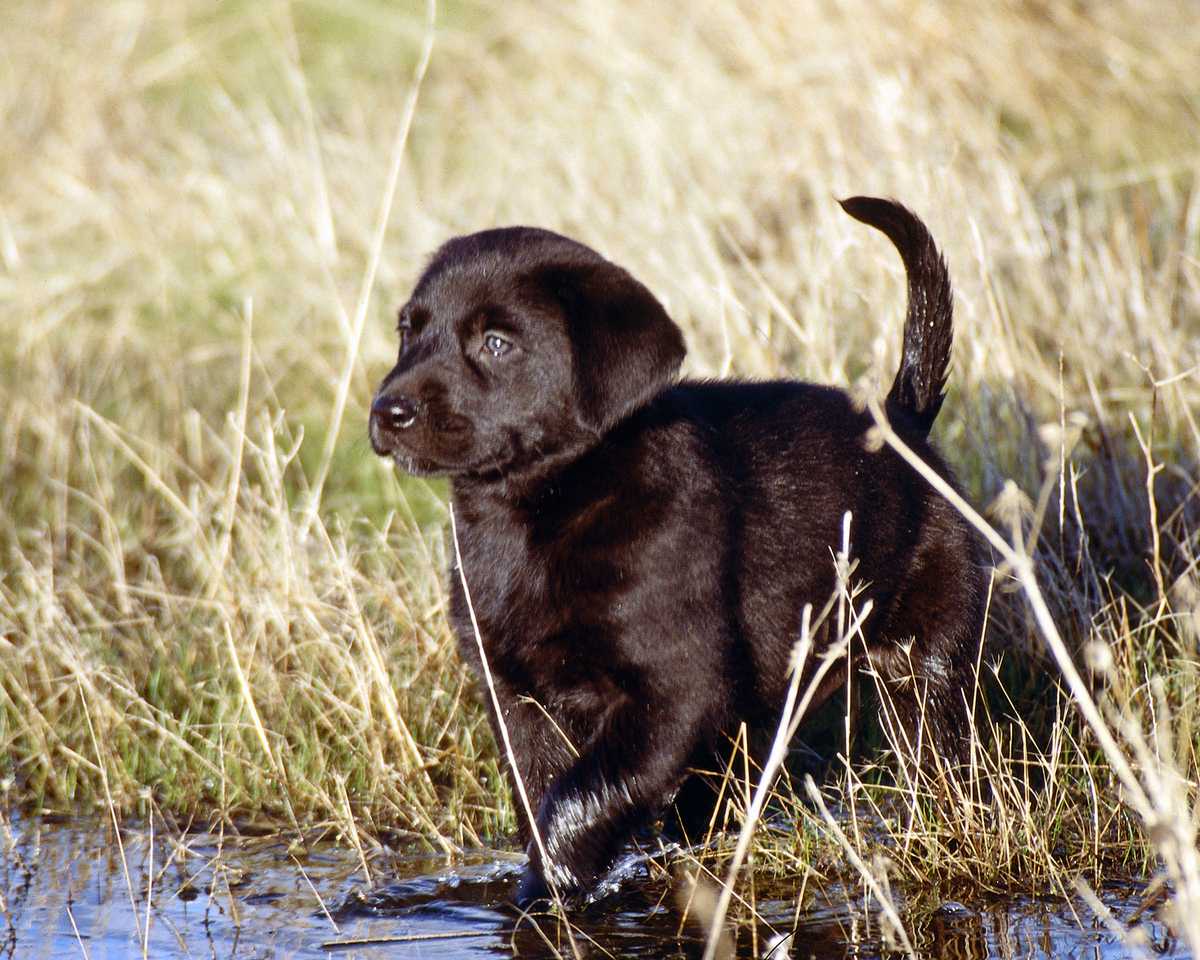 |
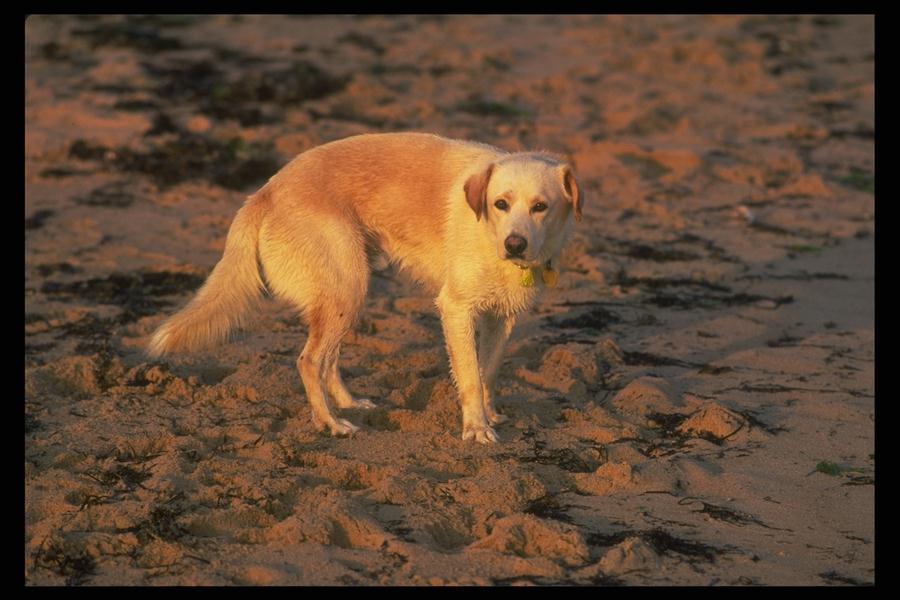 |
This dog is fearful and lacking in confidence. His back is arched with his butt and head lowered, his legs are bent, his tail is down (though not tucked under his body). He’s looking at the thing that’s scaring him. |
| This puppy is clearly fearful and hiding under his person’s legs. His head and back are lowered, his ears are down, and his pupils are dilated (showing red in the camera flash). I would not reach out to this puppy – I would expect him to back away, growl, and maybe even snap at such an invasion of his space. (Instead, I would use Calming Signals such as turning sideways, looking away, yawning, touching the ground in an imitation of dog sniffing, and if the dog seems to relax I might hold my hand out to a neutral space between us for him to sniff). |  |
Taking Control/Deferring
(sometimes called dominance/submission)
When dogs seek to gain control over a resource (including controlling the actions of other dogs), they may use certain body postures: Standing over another dog, standing tall, hooking the dominant dog’s chin or paw over another dog’s shoulders; staring. These were formerly called signs of “dominance”. Some very confident dogs who are used to getting their own way will roll on their backs, exposing their bellies, in an attempt to reassure a more shy dog, or to get that other dog to play. They will be relaxed when they do that, and usually still look the other dog in the eye. Sometimes mounting (“humping”) another dog is a way of establishing control, but it is more likely a sign of stress; this often-misunderstood gesture can also be used by a low-confidence dog to try to demonstrate his allegiance with a higher-confidence animal.
Note that dogs who live together might form some sort of dominance/submission relationships in regards to specific areas: who gets access to preferred sleeping spots, who gets access to certain chewies, who gets access to the humans. But dominance is a description of a relationship between two individuals in regards to resources, it is NOT a description of any one individual’s personality. Dogs have not been shown to form stable dominance hierarchies the way chickens or chimpanzees do, although relationships between dogs in regards to prized possessions (e.g. bones) has been demonstrated. Some dogs use the ancestral gestures of dominance to act as a bully; many dogs use these gestures of subordination as appeasement gestures (trying to turn off aggression) when they see humans “attacking” them irrationally (what we sometimes imagine is punishment for behavior we don’t care for).
 |
This confident dog is standing tall. If another dog were sniffing this one, this one would definitely be giving signals that he considers himself to be a high-ranking animal. |
Deferring body postures: lowered head and body; allowing other dogs to stand over them or hook their heads over their shoulders; licking at other dogs’ lips and mouth corners; looking away from the other dog; rolling on back and craning head away from other dog, while covering tucking their tail.
Note that among artificial wolfpacks (as opposed to natural family groups), the hierarchies are usually maintained and demonstrated very casually and almost always by more submissive members of the pack. Very high-ranking animals very seldom demonstrate their rank, unless they lack confidence. Most demonstrations and almost all fights that occur over rank are done by the middle-ranking or unconfident members.
“Forcing the dog onto its back is the equivalent of an abusive parent beating a child to force it to say, ‘I love you.’ Although he or she may have forced the words out of the child’s mouth, they cannot force the statement to be true…. Forcing a dog into a submissive position is the Doggish equivalent of this scenario. Even worse, this technique may actually anger the dog enough to provoke it to attack. … Forcing a dog into an alpha roll, or shaking the dog, both constitute physical aggression. Physical aggression is not communication. If there is good communication, then such confrontations need not occur.” – Stanley Coren, “How to Speak Dog”
Play and Play Invitations
Since dog-dog play is very similar to serious things like fighting, hunting and reproducing, dogs have good ritualistic ways of demonstrating that their intentions are peaceful and fun-loving. Dog play is often initiated by a play invitation like a play bow or pawing the air (especially with puppies), and it seems to say, “None of the biting, stalking, or humping I’m about to do is serious, this is just fun, OK?”
Even when dogs play very roughly, they are usually fairly relaxed; their lips usually cover their teeth (not drawn back in a snarl). Dogs often bark in play; this will usually be higher-pitched than that same dog’s fear-bark or warning-bark.
Sometimes dogs will mount each other in play. They are often excited, but not in a sexual way, and it seems to be a way to bond. It is occasionally a show of dominance, but not always. Some dogs appear to mount high-ranking dogs in an attempt to find their place in a group that is much more complicated than a straight-line hierarchy.
| The classic play bow is the dog’s invitation to play. The dog’s tail and butt is in the air, and the front legs are lowered. The dog’s ears are up and forward, his mouth is open in a “grin”, and his eyes are relaxed. | 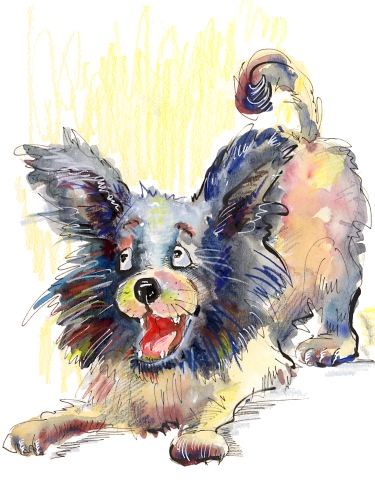 |
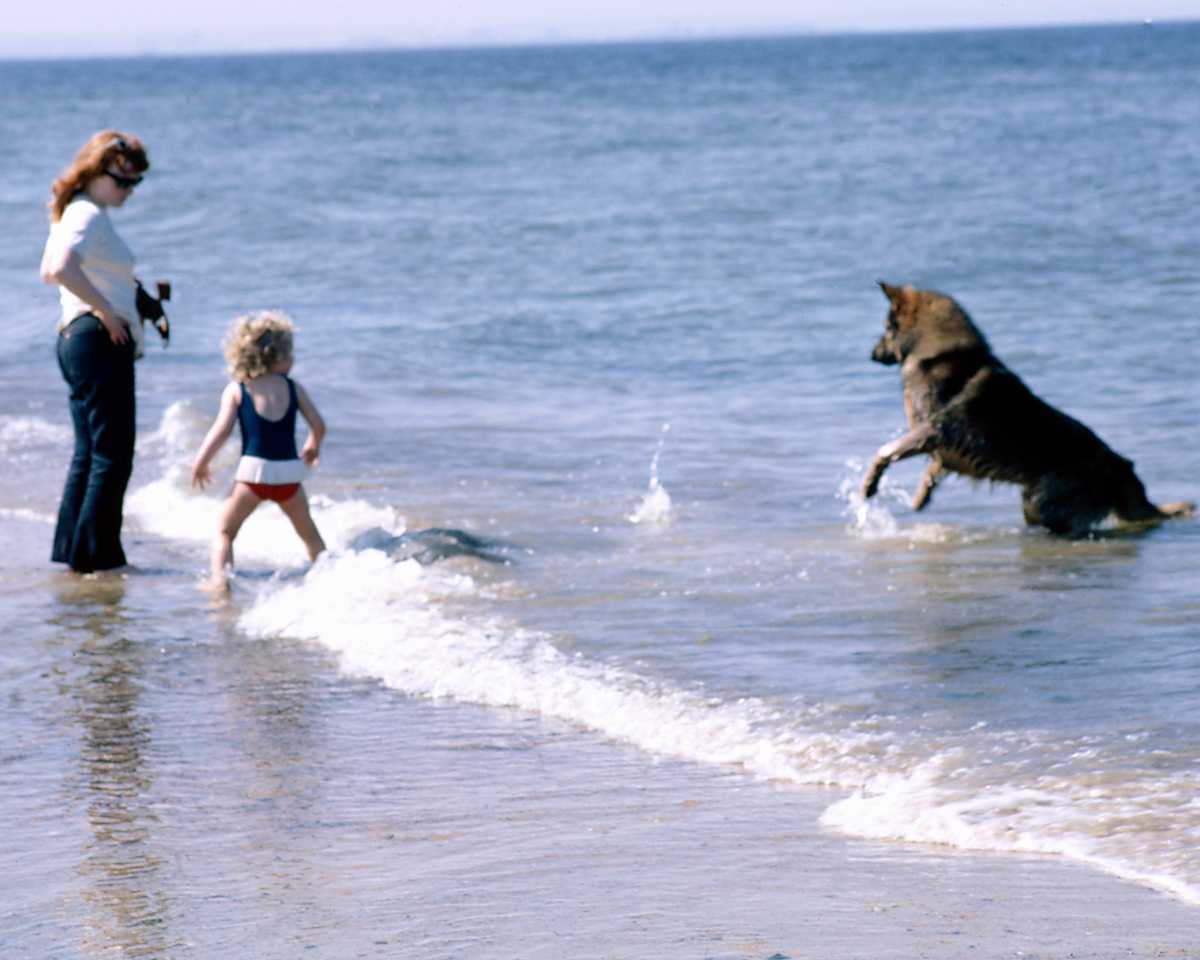 |
This dog is playing, probably chasing something that was just thrown in the water. Her ears are pricked forward with attention. |
| In this picture the dog is playing with a kitten. The whites of the dog’s eyes may be showing (or it could just be the glare from the camera flash!), but his face is relaxed, and his lips are relaxed covering his teeth. |  |
 |
Here’s some rough play. In the photo to the left, one puppy is down on his back, and the other is still charging up on him. But note how relaxed the “down” puppy’s legs are, and how neither of them are really showing their teeth (the corners of their mouths are relaxed, not pulled back). I imagine they’ll start bite-wrestling in a moment, accompanied by furious-sounding but innocent growling, and stop after a few minutes to companionably drink some water! The cartoon below also shows rough but normal puppy play-fighting.
|
If playing dogs get too aroused, you might want to intervene. If your dog is getting overwhelmed or is overwhelming someone else, invite them to take a short break. No punishment is necessary: it’s just a breather, not a penalty.
Go on to Page Two
(stress and calming signals, aggression, and how to react)
Updated January 25, 2018
All material copyright Stacy Braslau-Schneck. Reprints for non-commercial use, and with the author’s permission only.
Would you, your training company, or your club like to reprint this?
Please be sure to keep my name, business name, and the website URL with the article, and if possible, please send me a copy.
See the Contact page for email and mailing address.

